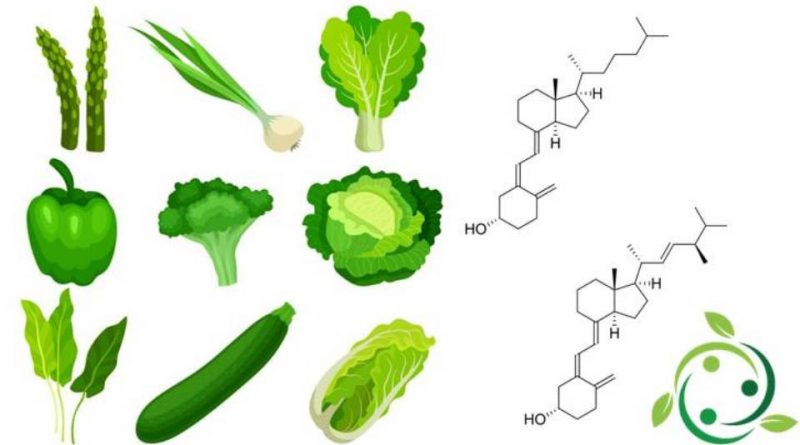Vitamin D
Vitamin D
The term vitamin D includes a group of fat-soluble pro-hormones consisting of 5 different vitamins: vitamin D1, D2, D3, D4 and D5.
However, vitamin D exists mainly in two forms, Ergocalciferol or D2, absorbed with food, and Cholecalciferol or D3, synthesized directly by the body from cholesterol derivatives present in the dermis exposed to sunlight (irradiation of sterols present in the skin). There is also Dihydrocalciferol or D4.
In detail, the main forms that make up the vitamin D group are:
– vitamin D1: compound consisting of 1: 1 parts of ergocalciferol and lumisterol;
– vitamin D2: ergo calciferol;
– vitamin D3: cholecalciferol;
– vitamin D4: dihydroergocalciferol;
– vitamin D5: calciferol site.
Vitamin D is important for mediating and regulating the metabolism of Calcium and Phosphorus, thus allowing a correct and healthy bone mineralization. Its absence can lead to rickets in children, i.e. stunted growth and bone deformation, and / or decalcification of bones in adulthood (Osteomalacia). Exposure to light is sufficient for the daily requirement; in particular moments of life, such as development, pregnancy and lactation, or peculiar situations of underexposure, it would be good to supplement Vitamin D with foods such as: butter, meat, milk, cod liver oil, eggs.
However, the main source of vitamin D for the human body is exposure to solar radiation. Vitamin D obtained from sun exposure or through diet is present in a biologically inactive form and must undergo two hydroxylation reactions to be transformed into the biologically active form, calcitriol.
However, vitamin D is scarcely present in foods (some fatty fish, milk and derivatives, eggs, liver and green vegetables). The only exception is cod liver oil.
The daily requirement of vitamin D varies according to age. The daily requirement of vitamin D is 400 units per day, in the absence of risk factors. Doses can vary and reach up to 1,000 units per day in the presence of risk factors or deficits.
Vitamin D deficiency –
Vitamin D deficiency negatively affects bone calcification with effects ranging from rickets for children to bone deformations of various kinds and osteomalacia, which occurs when the bone structure is externally intact but inside the bones is registered insufficient mineral content.
Lack of Vitamin D also makes teeth weaker and more vulnerable to cavities.
Excess of vitamin D –
Excess vitamin D can cause widespread calcification in the various organs, resulting in vomiting, diarrhea and muscle spasms.
Warning: The information shown is not medical advice and may not be accurate. The contents are for illustrative purposes only and do not replace medical advice.

